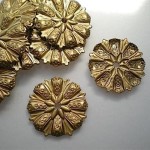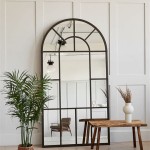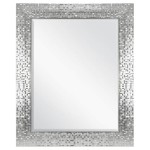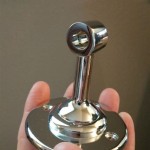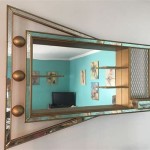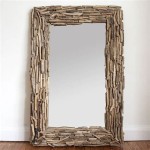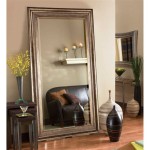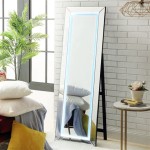Essential Aspects of Mirror Wall Installation: A Comprehensive Guide
Mirrors are a versatile and stylish way to enhance the aesthetics and functionality of any room. Installing a mirror wall is a popular choice for homeowners looking to create a statement piece, add depth to a space, or improve natural light. However, it's essential to consider certain aspects to ensure a successful and long-lasting installation.
This comprehensive guide will explore the critical elements of mirror wall installation, providing valuable insights to help you achieve a stunning and practical result. We'll cover everything from choosing the right mirror to proper mounting techniques, with a focus on ensuring safety and durability.
1. Selecting the Mirror
The type of mirror you choose will significantly impact the overall look and feel of your wall installation. Consider factors such as the size, shape, and frame material. Measure the designated wall space to determine the optimal mirror size and select a shape that complements the room's decor. Frameless mirrors offer a modern and minimalist aesthetic, while framed mirrors can add an elegant touch.
2. Surface Preparation
Before mounting the mirror, it's crucial to prepare the wall surface properly. Ensure the wall is clean, dry, and free of any debris or imperfections. If necessary, sand or spackle any uneven areas to create a smooth and level surface. This step will help prevent rattling or shifting over time.
3. Adhesive Selection
Choosing the right adhesive is essential for securing the mirror to the wall. There are various adhesive options available, each with its advantages and suitability for different wall types. Construction adhesive, mirror clips, and mounting tape are commonly used. Be sure to follow the manufacturer's instructions carefully for proper application and weight capacity.
4. Mounting Techniques
The mounting method will depend on the size and weight of the mirror. For smaller mirrors, adhesive alone may suffice. However, larger or heavier mirrors require additional support. Mirror clips or D-rings can be used to attach the mirror to the wall securely. It's always advisable to use appropriate hardware and ensure the mirror is level before securing it permanently.
5. Safety Precautions
Mirrors can be fragile, so it's crucial to take safety precautions during installation. Wear protective gear such as gloves and safety glasses. Handle the mirror with care and avoid placing undue pressure on its edges. If the mirror is particularly heavy or large, consider seeking assistance from a professional installer.
6. Long-Term Care and Maintenance
Once the mirror wall is installed, it's important to maintain it properly to ensure its longevity. Avoid using abrasive cleaners or sharp objects on the mirror's surface. Regularly dust and wipe it with a microfiber cloth or a non-streak glass cleaner. If the mirror becomes cracked or damaged, seek professional repair or replacement promptly.
Conclusion
Mirror wall installation requires careful planning and execution, considering essential aspects such as mirror selection, surface preparation, adhesive choice, mounting techniques, safety precautions, and long-term care. By following these guidelines, you can create a stunning and durable mirror wall that will enhance the aesthetics and functionality of your home for years to come.

Mirror Walls Professionally Installed Cut Rate Glass

A Mirror Wall For Your Home Gym Dick S Rancho Glass

How To Design A Custom Mirror And Glass Wall Installation

Mirror Installation

Mirror Wall Hanging Mounting London West

Mirrors Capitol Glass

Install Wall Mirrors Without Damaging Your Apartment Walls Centreville Va Glass Mirror Blog

Feature Mirror Walls Creoglass Design

Mirror Walls Professionally Installed Cut Rate Glass

Installing Mirror Glass Panels On Walls Wall Fitting Skills
